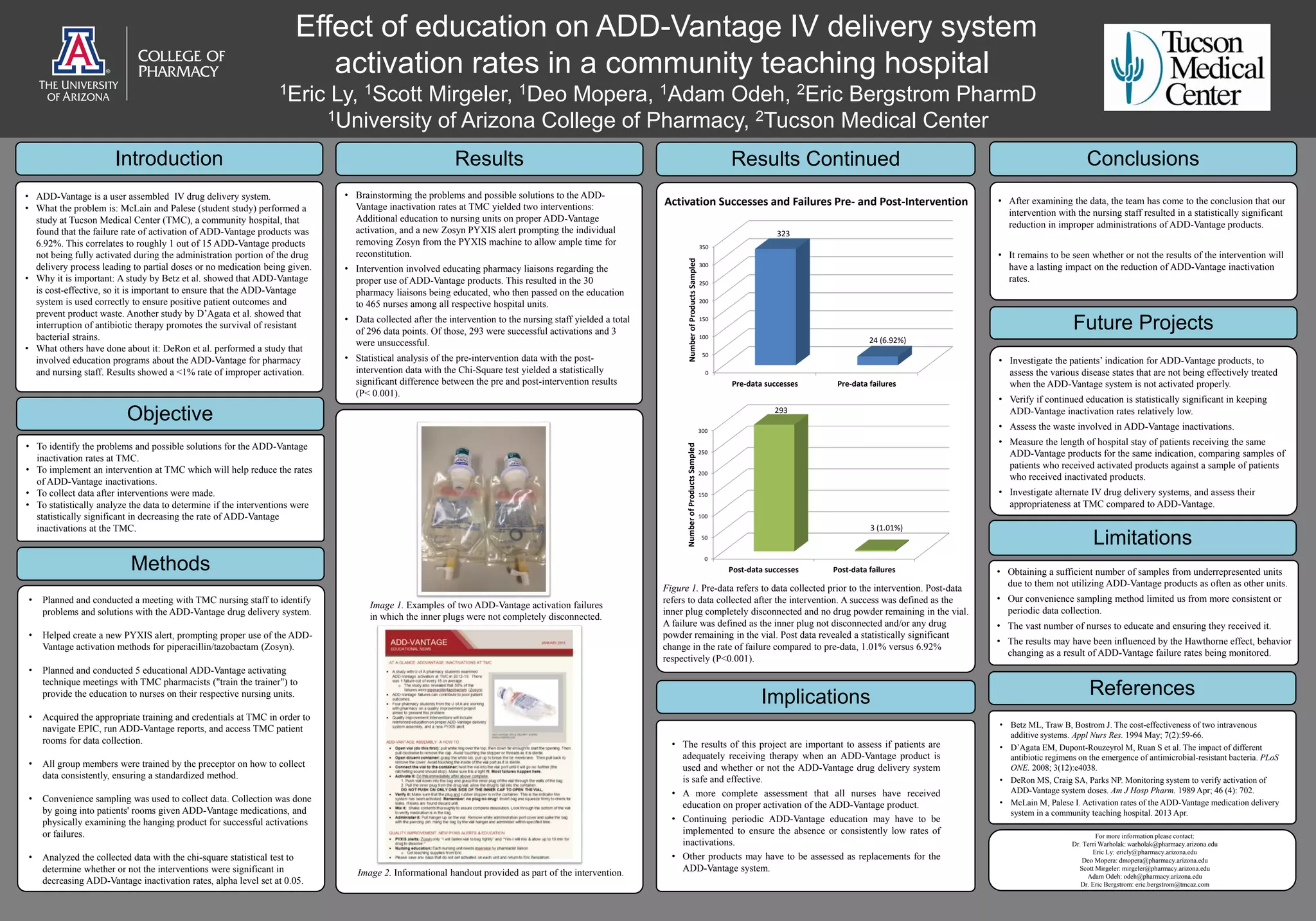1. An education intervention was conducted to address high failure rates of activating ADD-Vantage drug delivery systems at a hospital. Pharmacy liaisons educated nurses, who then educated other nurses.
2. Data collected after the intervention showed a significant reduction in failure rates, from 6.92% to 1.01%.
3. The results provide evidence that the education intervention successfully improved activation of ADD-Vantage systems, helping to ensure patients receive full doses of medications.
